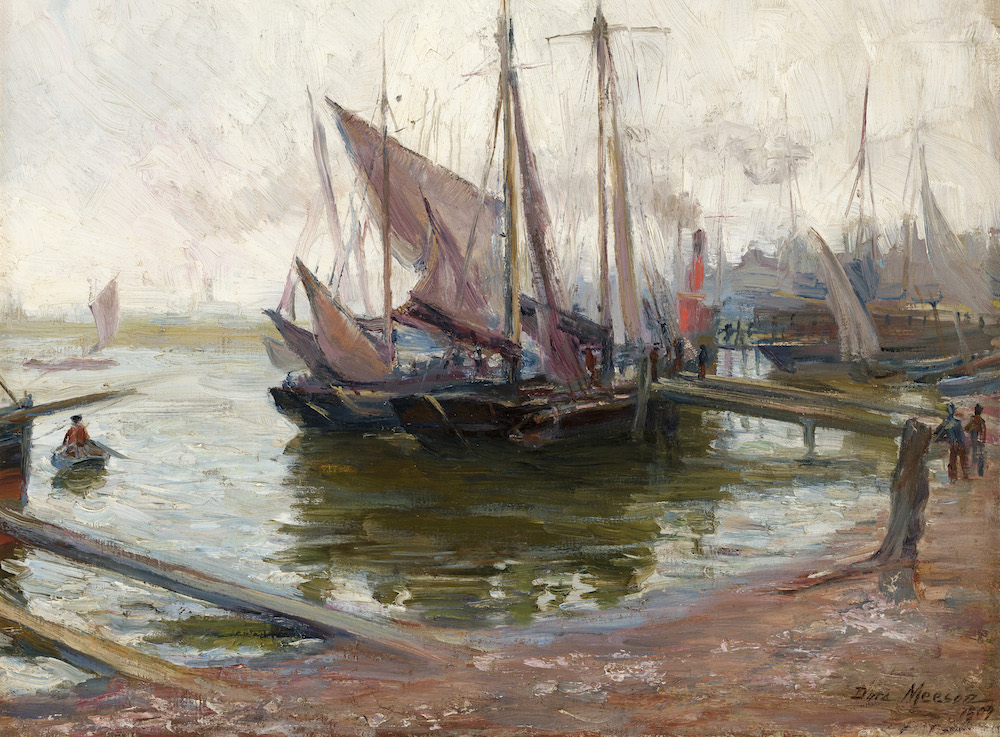(Waiting for the Tide)
Dora Meeson

Details
- Artist
- Dora Meeson
- Title
- (Waiting for the Tide)
- Year
- 1909
- Medium
- oil on canvas on cardboard
- Size
- 41 x 51 cm
- Details
signed lower right: Dora Meeson 1909
Reproduced by permission of Lt. Col. Simon R Hearder on behalf of the heirs in copyright.
Sold This artwork has been sold. Please contact us for similar artworks.
Further Information
Waiting for the Tide was Meeson’s entry for the Paris Salon in 1908 and is very similar to this larger version, which appears to be a European scene. It retains the central red smokestack and strongly painted diagonals leading the eye into the picture, which are then drawn up the central mast. This version adds a more narrative element with the use of figures and extends the beautifully rendered water and reflections further into the foreground.
Return to the Innovative Australian Women exhibition homepage.
Dora Meeson established a successful career as a painter exhibiting at the Paris Salon and the Royal Academy and holding exhibition in Australia in 1913, 1934 and a solo exhibition in 2013 at Castlemaine Art Gallery. Meeson moved with her family living between London, New Zealand and Melbourne, studying at the Christchurch School of Art and the National Gallery School, Melbourne. There is some evidence that she was the winner of the Travelling Scholarship Prize in 1896, with her painting At Last, but she withdrew to allow the award to go to George Coates, whom she eventually married. Meeson was able to travel to Europe of her own accord to further her studies at the Slade School, London (1896-98) and Academie Julien, Paris (1898 – 99). From 1906, Meeson and Coates lived in Chelsea, moving in bohemian circles including Augustus John, William Orpen and John Singer Sergent. Meeson was an important figure in the suffragette movement, and painted the banner carried by Australian and New Zealand Women Voter’s Committee in the procession of 1911, which was honoured on a commemorative $1 coin in Australia in 2003.
Meeson was a founder member of the Society of Mural Decorators and Painters in Tempera in 1919 and was the first Australian female member of the Royal Institute of Oil Painters. Meeson’s paintings covered a diversity of subjects, including a series featuring the Thames River, a male dominated area of marine industry and poverty, not the usually accepted domain for a woman artist. She also painted a number of works directly inspired by the experience of the First World War.
Her work is represented in the National Gallery of Victoria; the Art Gallery of New South Wales; the Art Gallery of South Australia; the National Library of Australia; the Australian War Memorial; Ballarat Art Gallery; Castlemaine Art Gallery and the Imperial War Museum, London among other collections.
